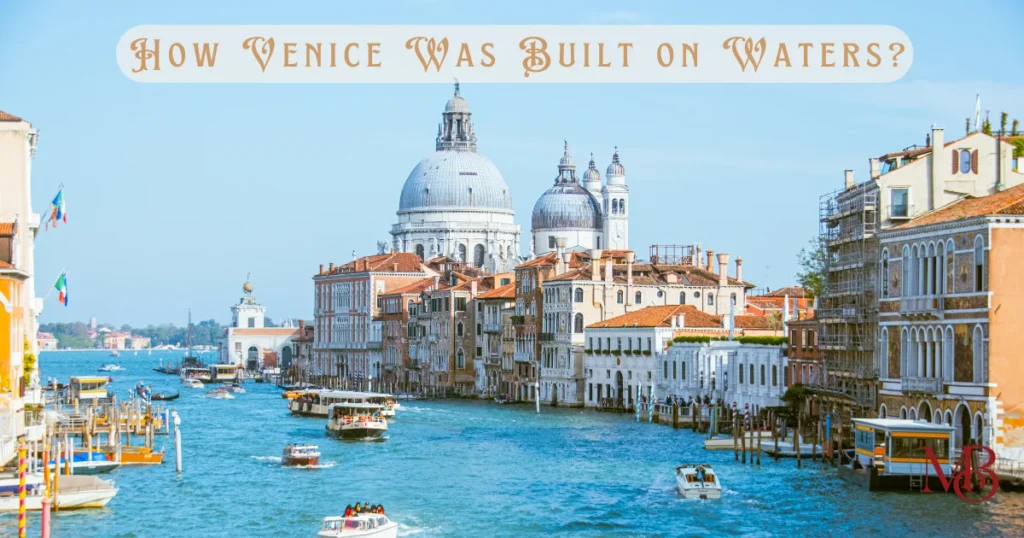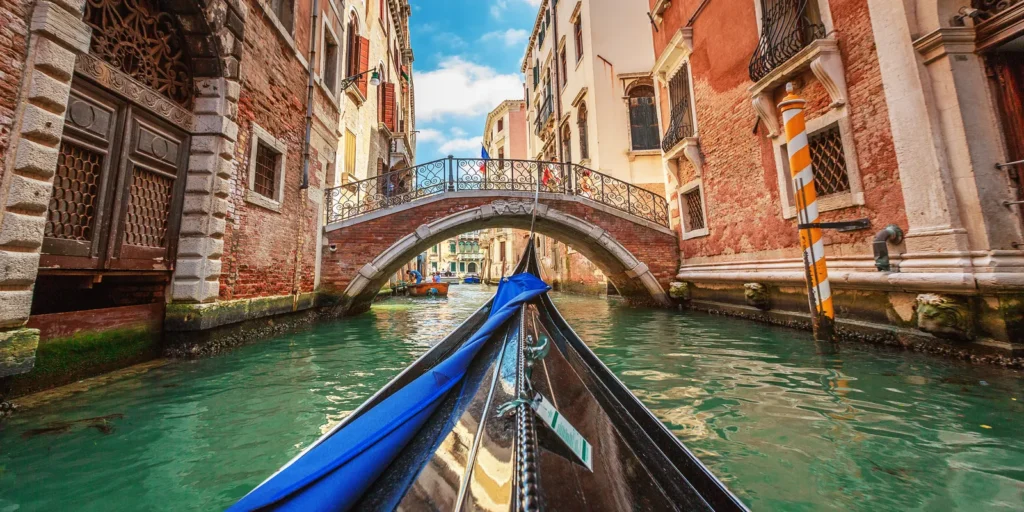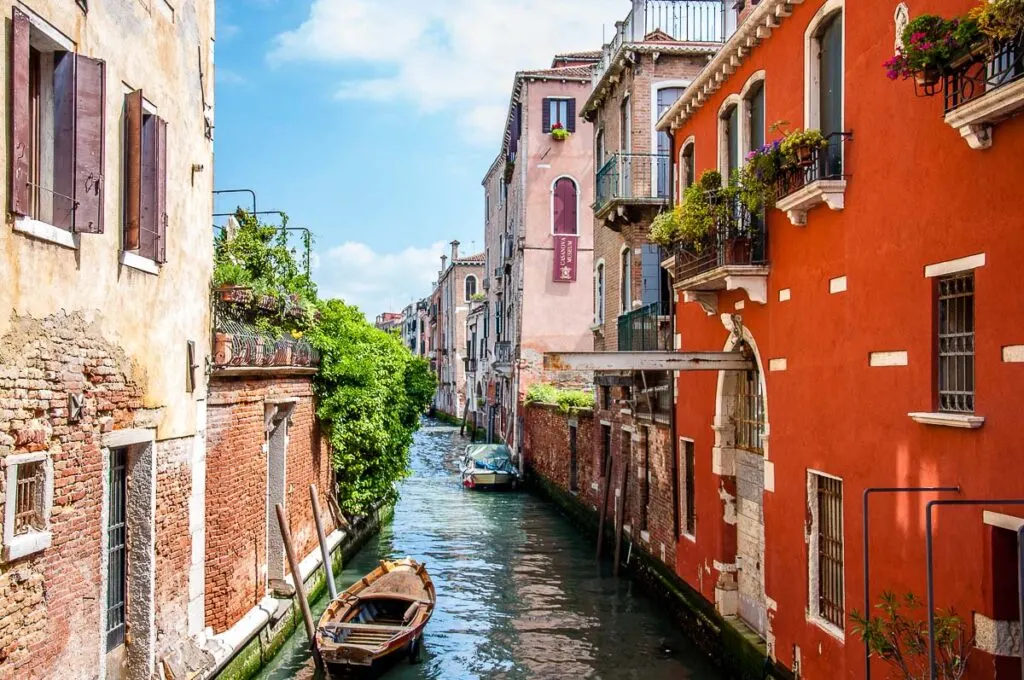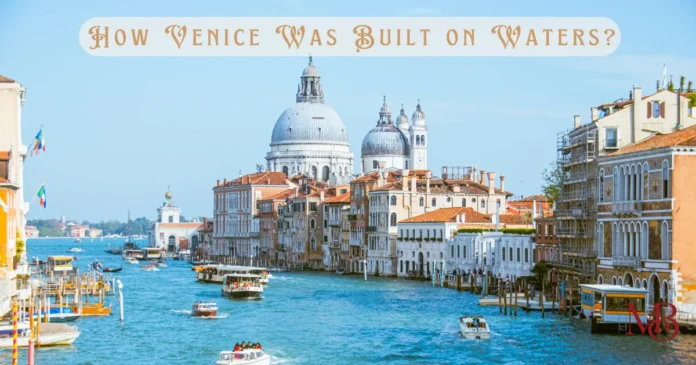How Venice was built on waters? Venice, known as “La Serenissima,” stands as one of the most unique cities in the world. Its labyrinth of canals, historic architecture, and artistic treasures evokes a sense of wonder in all who visit. But the most astonishing aspect of Venice is not what it is today, but how it was built. How did this floating city emerge from the waters of the Venetian Lagoon?

The Birth of Venice: A Refuge in the Marshes
The story of Venice begins in the early Middle Ages, during a time of upheaval and invasion. In the 5th century, as the Roman Empire crumbled under the pressure of barbarian invasions, people fled to the relative safety of the Venetian Lagoon. With its shallow waters and numerous small islands, the lagoon offered a natural defense against invaders.
These early settlers, mostly from the surrounding mainland regions like Padua and Aquileia, established small communities on the islands of the lagoon. They lived as fishermen and salt producers, relying on the natural resources of their new environment. However, these humble beginnings laid the groundwork for what would become one of the most remarkable cities in history.
Engineering a City on Water: The Foundations of Venice
Building a city on water posed enormous challenges. The islands of the Venetian Lagoon were little more than marshy, unstable land, and the constant threat of flooding loomed large. To create a stable foundation for their homes and buildings, the Venetians had to come up with innovative solutions.
The first step in building Venice was to stabilize the islands themselves. This was achieved by driving wooden piles deep into the soft, muddy soil. These piles, usually made from alder, oak, or larch, were driven into the ground until they reached a more solid layer of compressed clay. Over time, the wood became petrified due to the lack of oxygen in the waterlogged environment, making it as hard as stone.
On top of these piles, a layer of wooden planks was laid, followed by a foundation of stone or brick. This ingenious system provided a stable base for the buildings of Venice, allowing them to rise from the water as if by magic. The fact that many of these buildings still stand today, some over a thousand years old, is a testament to the effectiveness of this engineering marvel.

The Role of Canals: Venice’s Lifeblood
Canals are synonymous with Venice, but they are much more than just picturesque waterways. The canals of Venice are a crucial part of the city’s infrastructure, serving as its streets and highways. The Grand Canal, the city’s main thoroughfare, snakes through Venice in a large S-shape, connecting key areas of the city.
The canals were not merely a byproduct of the city’s construction but were carefully planned and engineered. They were dredged to create deeper channels for boats, and their banks were reinforced with stone and brick to prevent erosion. The canals also serve an essential role in the city’s drainage system, helping to manage the constant threat of flooding from the lagoon’s tides. How Venice was built on waters
The Rise of Venice as a Maritime Power
By the 9th century, Venice had grown from a collection of small islands into a thriving city-state. Its location at the crossroads of trade routes between East and West allowed it to become a major center of commerce. The Venetians, skilled sailors and traders, established a powerful maritime empire that stretched across the Mediterranean and beyond.
Venice’s prosperity was built on its control of trade, particularly in luxury goods like silk, spices, and precious metals. The wealth generated from trade allowed the city to invest in grand architectural projects, including the construction of iconic landmarks like St. Mark’s Basilica and the Doge’s Palace. How Venice was built on waters
Challenges and Innovations: Adapting to a Changing Environment
While Venice’s early engineers were remarkably successful in building a city on water, the city has faced constant challenges from its environment. The lagoon is a dynamic and ever-changing ecosystem, and the city has had to adapt to rising sea levels, subsidence, and the threat of floods.
One of the most significant challenges in recent history has been “acqua alta,” the phenomenon of exceptionally high tides that can flood the city. To combat this, Venice has implemented several measures, including the construction of a massive flood barrier system known as MOSE (Modulo Sperimentale Elettromeccanico). This system of movable barriers can be raised to block incoming tides, protecting the city from flooding.
In addition to technological solutions, Venice has also adopted more traditional methods of flood prevention, such as raising the floors of buildings and reinforcing foundations. However, the city’s battle with the forces of nature is ongoing, and its future remains uncertain in the face of climate change and rising sea levels.

Venice Today: A City of Art, Culture, and Resilience
Today, Venice is a UNESCO World Heritage site and one of the most popular tourist destinations in the world. Its unique history, stunning architecture, and vibrant cultural scene draw millions of visitors each year. However, the city also faces significant challenges, including the impact of mass tourism, environmental threats, and the need for ongoing maintenance of its aging infrastructure.
Despite these challenges, Venice remains a symbol of human ingenuity and resilience. The city’s ability to adapt to its environment, from its earliest days as a refuge in the marshes to its current efforts to combat flooding, is a testament to the enduring spirit of its people. How Venice was built on waters
How Venice Was Built on Waters? The Legacy of Venice’s Builders
The story of how Venice was built is one of vision, innovation, and perseverance. From the early settlers who sought refuge in the lagoon to the engineers who devised ingenious methods to build on water, the creation of Venice is a testament to what can be achieved in the face of seemingly insurmountable challenges.
You might also like: Rwanda The Royal Tour
As Venice continues to navigate the challenges of the modern world, it serves as a reminder of the importance of preserving our cultural heritage and protecting the delicate balance between human activity and the natural environment. Venice’s story is not just a chapter in the past but an ongoing narrative of resilience and adaptation, a story that continues to inspire and captivate people around the world. To read more such interesting stories like How Venice was built on waters, follow our Leisure page.


